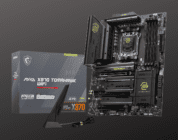Is it cheesy to start every Star Wars game review with the “A long time ago in a galaxy far far away…” bit? Either way, consider this self-aware snark that has the same spirit as Han Solo’s coy smirk; or shall I say, Kay Vess’ in this instance. Yes, it is about time that we get another Star Wars game but this time from the folks at Ubisoft’s Massive Entertainment, the folks behind The Division, and last year’s Avatar titles. Instead of embracing the feel of either of those titles, Massive went on to create something that felt really unique to Star Wars while feeling grounded. I don’t know how to exactly pinpoint where Outlaws fits within the typical genre paradigm.
Instead of sticking to one single genre, it happens to pull from a variety of influences. It shares a little bit of DNA with stealth coming from Splinter Cell, and action coming from those moments you get caught in Assassin’s Creed. It is less “Division” and more divisive, to say the least.
Still, despite borrowing several concepts, Outlaws tends to stand on its own two feet, balancing multiple systems but kind of struggles to hold up the weight from time to time. Not only are you dealing with the dramatics of the stealth and action mechanics, you’re contending with a relationship system, exploring, and upgrading all of your tools, and so on. While it has the aura of a traditional Ubisoft game, it does its best to break away from that mold which leaves an odd taste in my mouth because everything just feels a tiny bit off.
 Sneaky Sneaky
Sneaky Sneaky
Outlaws has several pillars that are holding this game up with the first one being stealth which I found to be quite odd at first. Sneaking around the first main area didn’t present me with the best experience. Enemies seemed to be simultaneously omnipotent and dull. It wasn’t until later on where I felt the narrative stealth areas to feel a bit more rewarding and legitimately fun. Sneaking around areas whether it be a syndicate base or an Empire stronghold felt scratched that itch that has been irking me for ages. There was a sense of risk and reward that played along with the overwhelming feeling of urgency as you traversed deeper into each lair.
Still, something felt a tiny bit off. I loved the duck-and-cover gameplay found within titles of Ubisoft’s past, and Outlaws seemed to have broken away from that traditional concept- no more sticking to walls, leaning over, and hitting a button to seamlessly traverse to the next bit of cover. This is all freeform, a true expression of control placed into your hands to fully utilize. Like water, Kay Vess flows from cover to cover without the jank that has plagued past Ubisoft titles. Although, when this is paired with awkward enemy AI, it yields marginal results. Either you sneak out or you are found instantly. I’ll be brave and say that I found the most fun kicking the difficulty downward a bit and taking in the environments without the cloud of urgency hanging overhead.
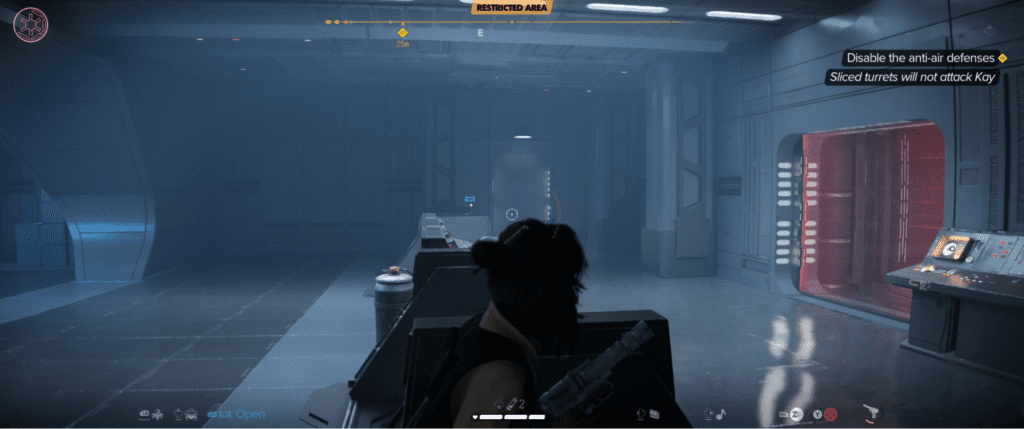
Lock picking and hacking are both key tools of the trade, but you have a great, cuter instrument at your disposal and that is your fuzzy, furry little friend, Nix. This adorable creature not only proves that Star Wars is in its best era when you have a cute companion, but Nix is an utter menace to everything around him. With a simple press or hold of a button, you can command the lovable creature to attack those around him, steal, and even create distractions so you can sneak by unnoticed. Even more awesome, Nix can disable security panels, open doors, and set off explosives, and when you use him to his fullest extent, it begins to lean towards the more hilarious aspect of Outlaws. To a point, Kay can rely on Nix a bit too much, but honestly, I didn’t find it to be annoying. How could you? Nix is adorable!
Action Combat
Stealth and Nix aside, the second pillar of Outlaws is the action combat. As Han Solo said, “Hokey religions and ancient weapons are no match against a blaster” and Outlaws really embraces that factor. There really is nothing better than delivering a few blaster shots into the open when the heat of battle turns up. But, there is a huge caveat to that.
The main focal weapon at your disposal is Kay’s blaster which offers a few customizable options and addons to help expand field utility and dispatching foes efficiently. It is the only constant weapon you get throughout the whole game. While I would love to have had a larger arsenal, Massive Entertainment really did their best to ensure the weapon was a blast to use; pun intended. While fairly basic, it is fun to shoot and if you happen to pull the trigger too frequently, there is a cooldown mechanic that rewards you with a fresh “magazine” upon hitting the right bumper at the right time. When chaos surrounds you, this is a great mechanic to help add more stakes to the situation. As I said, there are other modes to help you counter specific enemy types- not many though.
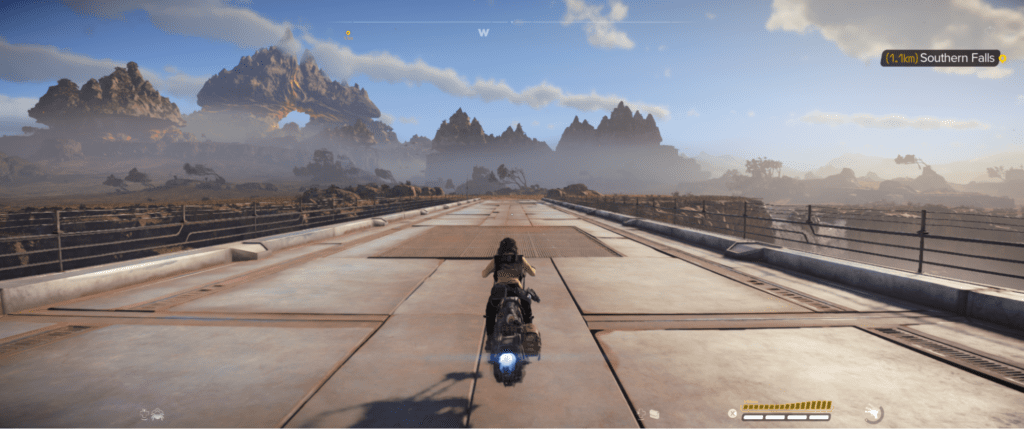 Of course, you can pick up other weapons on the ground which is a nice touch. They do have limited ammo capacity unlike your blaster, which narratively is confusing but it is what it is. I understand the idea is to not use the more powerful weapons as a crutch and keep the blaster relevant throughout the entire game. As we know, there are archetypes within the Star Wars universe. The Jedi have their lightsabers, astromech droids have that little hacking tool and a taser, and smugglers always have a cool jacket and a blaster.
Of course, you can pick up other weapons on the ground which is a nice touch. They do have limited ammo capacity unlike your blaster, which narratively is confusing but it is what it is. I understand the idea is to not use the more powerful weapons as a crutch and keep the blaster relevant throughout the entire game. As we know, there are archetypes within the Star Wars universe. The Jedi have their lightsabers, astromech droids have that little hacking tool and a taser, and smugglers always have a cool jacket and a blaster.
When met with multiple foes, Kay can use her ability to mark several targets and execute each one in rapid succession, a concept borrowed from Splinter Cell and seems to be a staple to Ubisoft’s modern gameplay style. It’s cool and flashy but I constantly forget about it, to be quite honest. It also takes time to recharge, and I am always finding the moments where I do remember to use it, I can’t.
Exploration
Crash landing onto my first real planet eventually gave me my first traversal vehicle, a nifty little speeder. Resembling an old Ducati Scrambler, the speeder gives you the quick traversal that you need to get from point A to point B. I felt that the control was a little too sensitive as I spun around the open fields trying to regain a sense of composure and direction.It gets exciting when I am followed by enemy syndicates who are blasting away at me. I see red bolts fly over Kay’s shoulders as she sinks herself into the handlebars. When boosting, Nix hangs onto the back rail for dear life, still smiling at the excitement.
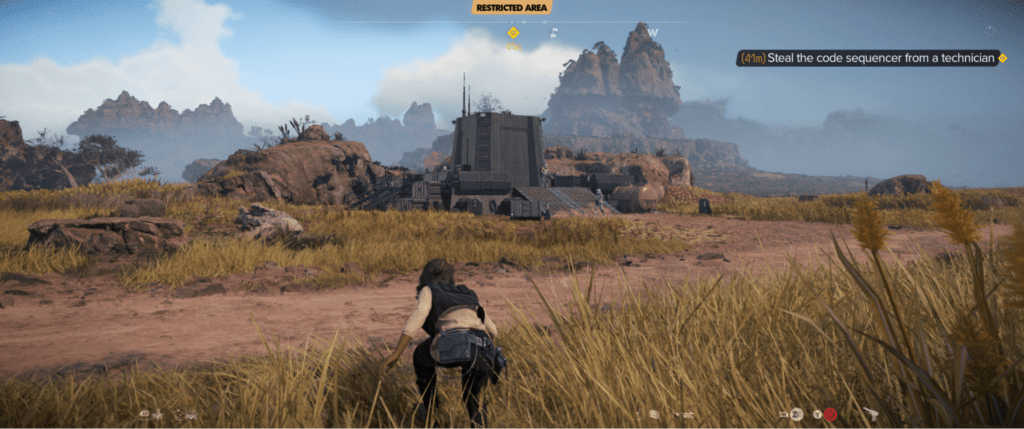 The speeder is a great traversal vehicle and while it doesn’t handle all that well, you can upgrade it and enhance it’s prowess. It gets faster, easier to steer, and so on. Of course, this isn’t the only thing you can customize. Exploration doesn’t just happen in the open worlds, it also occurs in space; kind of. When flying between planets, you can engage in space battles with Kay’s commandeered ship, the Trailblazer. While it does share the same name as the famous Chevrolet vehicle, it doesn’t handle like one. It is a bit awkward to control at times and shares some of the same control issues as the speeder bike, but it does the job. Can’t have a smuggler without a ship, right? Also, you can customize many aspects of the Trailblazer.
The speeder is a great traversal vehicle and while it doesn’t handle all that well, you can upgrade it and enhance it’s prowess. It gets faster, easier to steer, and so on. Of course, this isn’t the only thing you can customize. Exploration doesn’t just happen in the open worlds, it also occurs in space; kind of. When flying between planets, you can engage in space battles with Kay’s commandeered ship, the Trailblazer. While it does share the same name as the famous Chevrolet vehicle, it doesn’t handle like one. It is a bit awkward to control at times and shares some of the same control issues as the speeder bike, but it does the job. Can’t have a smuggler without a ship, right? Also, you can customize many aspects of the Trailblazer.
When you approach various outposts, they are filled to the brim with enemies. You can work your way around the base to overtake it, in true Ubisoft fashion. But, some of them can be quite challenging and may require you to upgrade your skills. Luckily, as you get further into the game, you can go on the hunt for certain individuals that will unlock a suite of new mechanics. You can perform certain maneuvers in the game to further enhance those capabilities. While a simple talent tree would have been fine with me, it actually works narratively.
Kay, despite being a ruffian at a young age, begins to really master her competencies by “learning” from these specific individuals. It is a really neat aspect of the game that I never thought I’d enjoy, but here I am absolutely praising the folks at Massive for including something like this that I haven’t really seen in games before. Sure, it isn’t as thorough as going to the person and learning directly from them a la Neo and Mobius, but what we have here is quite frankly great.
The Criminal Underground
Kay Vess is an interesting character who happens to be a victim of her environment. Starting the game off in Canto Bight, you are introduced to the lifestyle of a ruffian in a world of opulence. There are many acquaintances of Kay who otherwise want nothing to do with her aside from one character. Her, “I’ll see you soon!” is quickly met with “Please don’t come back.”These moments, while cruel, add that sense of personality to Kay and notes the history she has with her community- she is a liability to most of those who see her. It only makes sense that Kay would eventually seep into the underbelly of the criminal world. It is cliche, but I had fun with it. This is where three crime syndicates come into play with the Pykes, Crimson Dawn, and the Hutts. We learned about each of these in other shows with the Hutts being the most well known. We have seen the Pykes in The Clone Wars as well as the Book of Boba Fett while Crimson Dawn has been seen in many mediums including Star Wars: A Solo Story; and we all know who leads that organization. There is a fourth that comes into play later on with the Ashiga Clan which is fine for me. There are a few more elements that point to some of the other gangs of the Star Wars universe, but I’m not going to spoil those.
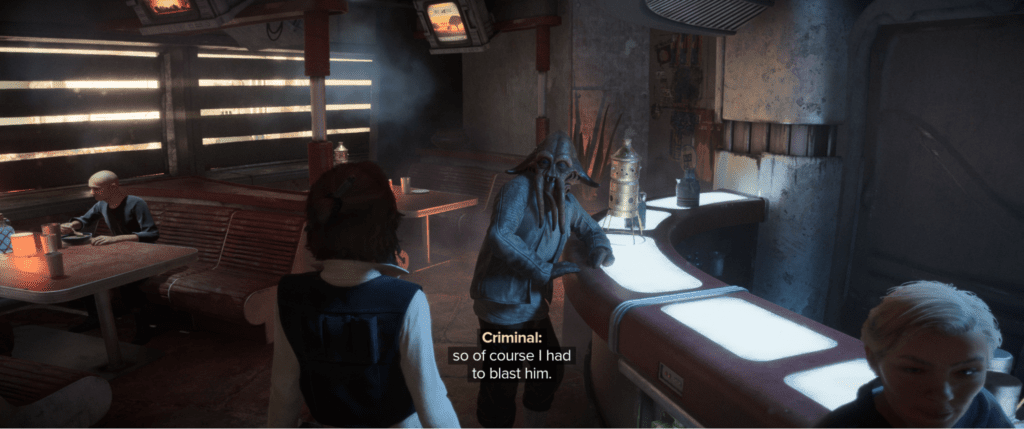 You can build relationships with each faction which provides you with various rewards. Most of all, it opens more doors to exploring more elements of each faction. The one thing that makes me feel a bit out of tune with this experience is how you can be on the good side of the Crimson Dawn and the poor side of the Pykes; it doesn’t really seem to change too much in the grand narrative experience.
You can build relationships with each faction which provides you with various rewards. Most of all, it opens more doors to exploring more elements of each faction. The one thing that makes me feel a bit out of tune with this experience is how you can be on the good side of the Crimson Dawn and the poor side of the Pykes; it doesn’t really seem to change too much in the grand narrative experience.
During one of the story missions, I was able to make a choice to frame either the Crimson Dawn or the Pykes, so I chose the Pykes. My reputation with the Pykes dropped, but their leader still wanted me to come by and do him a solid favor. I didn’t mind undergoing the mission, but I found it weird how often the opposing factions were willing to give me a second, third, and fourth chance.
I understand that a story needs to have content to play through, but with more clearly cut lines, Outlaws could have been a replayable masterpiece if choices were more carefully designed with outcomes that were somewhat more immediate. Yes, parts of the game play out differently but the span in which you make a decision to the payoff makes it a little less enthralling.
Hardware
Okay, this is where things are going to get a bit tricky. Star Wars: Outlaws was reviewed on PC with a code provided to me. My system is running an AMD Ryzen 7 5700G, 32GB of DDR4 RAM, a 2TB M.2 NVMe 4.0 SSD, and an AMD Radeon RX 7800 XT. It can handle almost anything I could throw at it. While the Ryzen 7 5700G only operates at PCIe 3.0 speeds, it still manages to deliver a great experience on my BenQ Mobiuz 34” 21:9 1440p display. Star Wars Outlaws might be the game that finally makes me reconsider my processor and really doesn’t really play nicely with my GPU. I would tag that with a “or so I thought” at the end but there is a huge interesting caveat I have discovered.
Thanks to the folks over at MSI who provided me with one of its RTX GeForce 4070 SLIM GAMING graphics cards, I was able to uncover some curious aspects of this game, solving one of my technical questions: is it the GPU, or is it the game? First and foremost, Outlaws was developed with NVIDIA technologies in mind. This means utilities like DLSS and Ray Tracing both get a huge advantage when using a GeForce RTX graphics card. While the RX 7800 XT is a beast, it wasn’t fully delivering on the experience and that is due to some under-the-hood development.
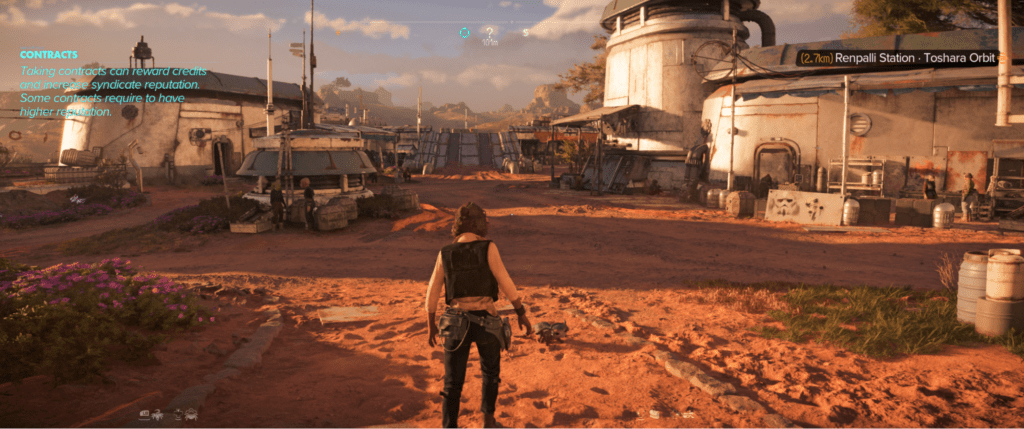 Outlaws was developed with Ray Tracing (RT) technology baked into the lighting engine, which saves time during development. These developers don’t have to work around multiple lighting scenarios. With consoles having light RT integration that along with a wide variety of graphics cards, it makes perfect sense to focus on using a single lighting application. But, this comes with a caveat: you cannot turn this off at all, you can only lower the settings on the PC. In many applications, RT on NVIDIA is mostly fine, but when you are operating at higher resolutions, the technology can actually dampen performance. This is why the PC specs have such an emphasis on using an NVIDIA GeForce RTX 4070 or an AMD RX 6700 XT for the “enthusiast” level. That being said, it was sad to see my RX 7800 XT still lag in the performance spectrum.
Outlaws was developed with Ray Tracing (RT) technology baked into the lighting engine, which saves time during development. These developers don’t have to work around multiple lighting scenarios. With consoles having light RT integration that along with a wide variety of graphics cards, it makes perfect sense to focus on using a single lighting application. But, this comes with a caveat: you cannot turn this off at all, you can only lower the settings on the PC. In many applications, RT on NVIDIA is mostly fine, but when you are operating at higher resolutions, the technology can actually dampen performance. This is why the PC specs have such an emphasis on using an NVIDIA GeForce RTX 4070 or an AMD RX 6700 XT for the “enthusiast” level. That being said, it was sad to see my RX 7800 XT still lag in the performance spectrum.
Yes, the AMD RX 7800 XT ran the game but with all the native settings it dragged the frame rate down tremendously for me. The game looked great on high settings and when I swapped over to ultra, I barely noticed a difference until I moved around. It got blurry and made me turn down the lighting and a few settings to get a better look. With the RTX 4070, I found that with the use of DLSS and better RT, I was opening at 60 fps smoothly. Was it better than the 7800 XT? Yes, it absolutely was. In this case, DLSS really does save the day. I was able to go almost up to ultra settings while making some fine-tuned adjustments to some settings. I found the experience to be a bit smoother, I noticed the better lighting immediately, and I was able to turn on some of the more finer details in the settings without seeing a large impact on my overall experience.
Although, I still see issues with the overall performance that permeated no matter which graphics card I had and one of these really took a bite when it came to the open-world content. Beautiful vistas, sure, but the draw distance and seeing a line where the environment popped in felt almost last-gen. I would expect this with a couple of older games, but it became so prominent here that it just rubbed me the wrong way. Not to mention that while the 4070 handled this game with finesse, it does teeter on the edge with 12GB of VRAM.
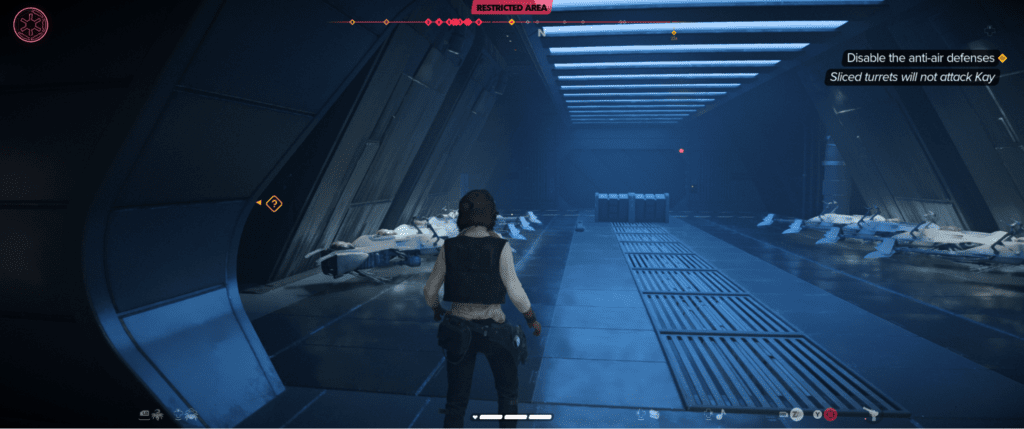 Verdict
Verdict
Massive Entertainment delivered quite the experience here, but there is a whole lot more I would have liked to see. Sure, it is a great single-player experience which we need a lot of with this franchise, but it still lacks a sense of variety for me. The more I think about it, the more “old school” this game feels to me. It really does capture the essence of a game that has since been lost to time.
Nothing seems too advanced beyond reasonable measure. It seems mostly manageable with the more complex concepts having their own ceiling. With the main pillar being the system focused on gang interactions and favoritism, I felt like it could have gone further. Otherwise, I found this to be a rather good Star Wars game that didn’t solely focus on the Jedi or the Force. Now, give me the bounty hunter game of my dreams.


